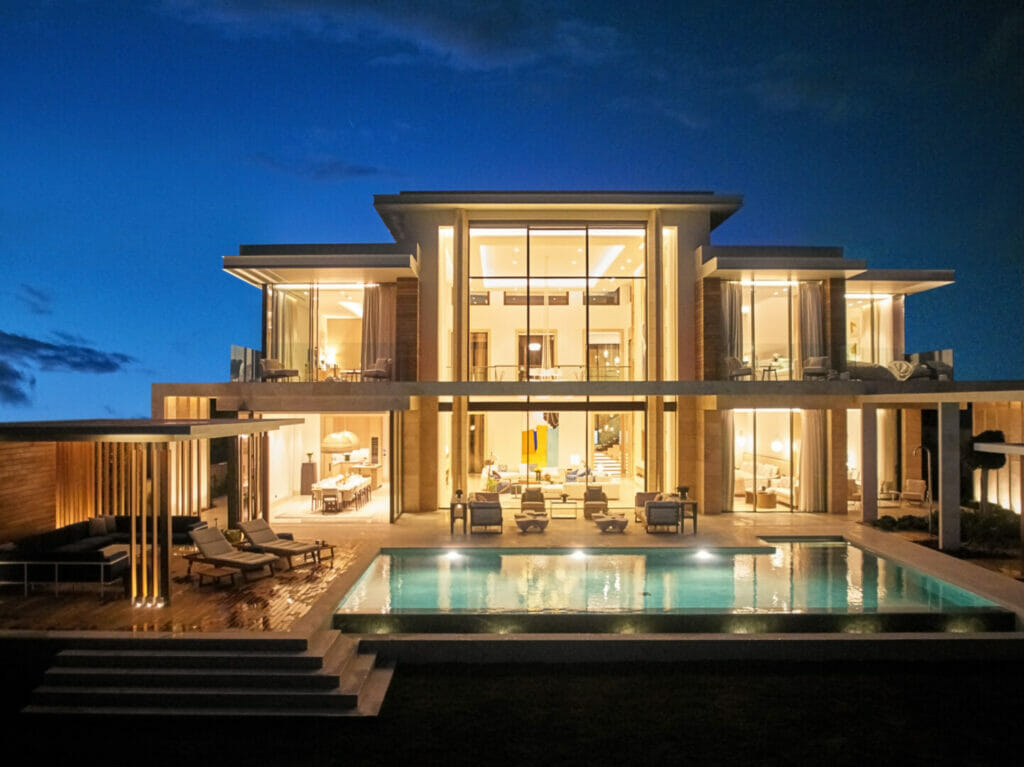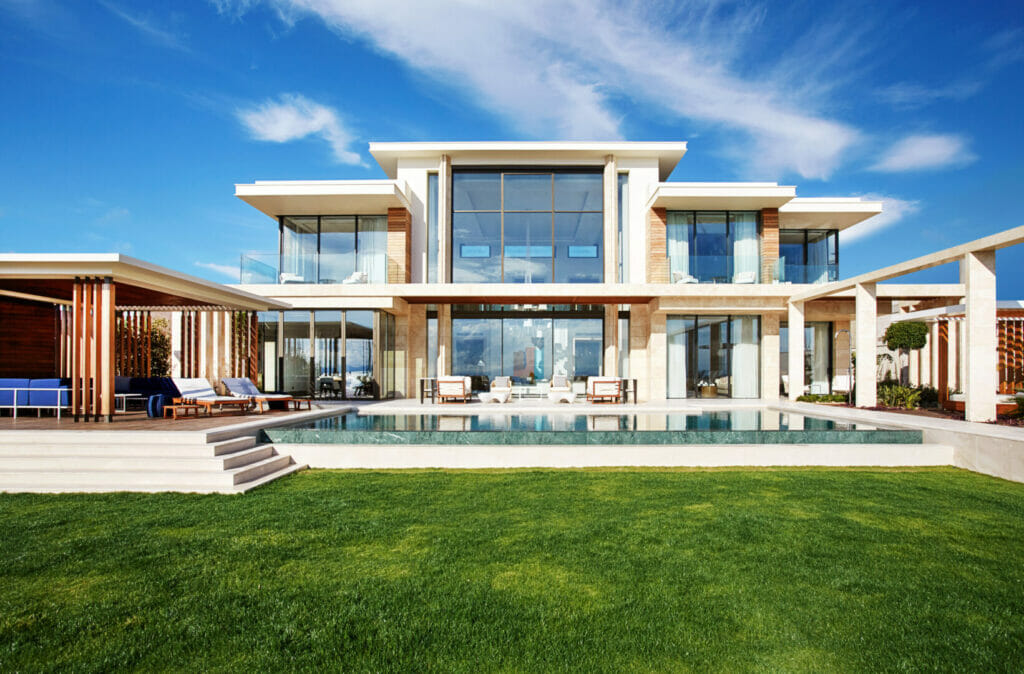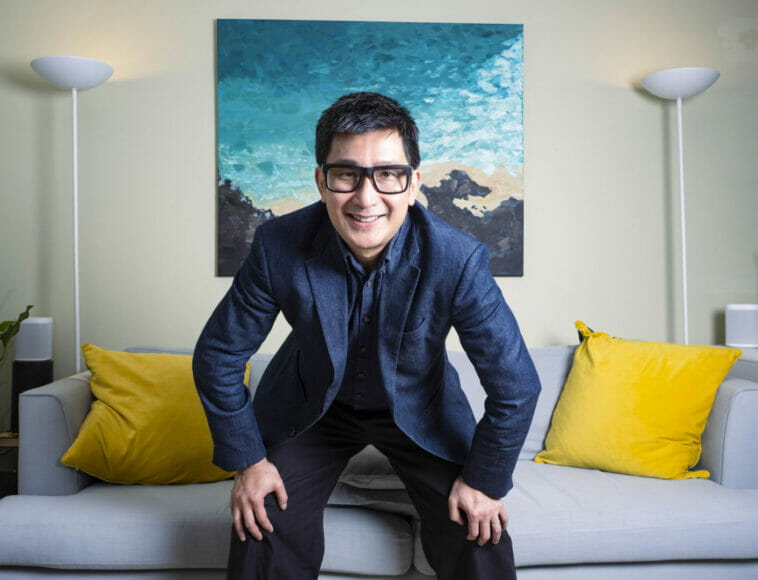Where do you seek inspiration from?
Inspiration is a strange and wonderful thing. It very rarely comes from a pure focus on the brief nor the end product for me. Inspiration is the journey itself, a journey of discovery through trial and error. I remember in school; I had a strange habit of stepping away from my painting / artwork very frequently and gazing at it from a far. It helped me physically sept out of my thoughts and relook at what I was creating. Hilariously this habit carried though to when I was working as a young architect even as the industry moved away from physical drawing boards and into computers. Halfway through working on something on my computer, I would stand up take a few steps back from the screen and with a tilt of my head, reassess what was being created in the virtual world. My colleagues found great mirth in this strange quirk.
I love that inspiration tends to blindside me, it may come from a conversation with someone, while painting, reading – or even taking a step away to design something else – as well as exploring what is inspiring the fashion runways that season, or revisiting seasons past.
As Architects and Designers, it is easy for us to fall into the trap of the ‘norm’. As our work is grounded in function, buildability, construction methods and the pragmatic side of architecture, it’s easy to forget the joy and wonder that architecture really creates.
We need to step out in courage and embrace imagination and playfulness. Word of warning though, it all needs to be balanced carefully. Playfulness without foundation or reason will instantly become indulgent and unrelatable.
Some of my favourite inspiration points are unusual atmospheres, the beauty of awkwardness and a sense of daring to be different. The atmosphere of a place is magical, it moves everyone in a different way, it makes us feel different. The most powerful thing about it is that it is very subtle and elemental. I enjoy exploring ways of making guests feel different without obviously knowing why.

This brings me to, ‘the beauty of awkwardness’, which at first glance probably needs a bit of explanation. On a personal note, I’d occasionally consider myself a bit of a gawky person, and the beauty of this is that I tend to quickly pick up on the quirks and awkward spaces in architecture. Spaces such as hotel arrival sequences that make guests walk across a flooded square to get to a beautiful view or a sitting meditation deck under a huge hanging rock seemingly about to collapse upon you, are all examples of awkward moments that make fantastic spaces and memories – and as well as awe-inspiring and creating lasting memories of our place, tap into our primordial need to explore and discover – it’s our design DNA.
How has inspiration changed over the course pandemic?
The knowledge we all share of the world, and particularly within our industry has changed greatly over the years. In the past, we would only be able to physically experience the best hotels of the world if we moved in the right circles to hear about them and had to means to go. Today, the internet has opened up our world and provides a lens into places and spaces we might only be able to dream of visiting – voyeuristically voyaging the newest, most innovative and creative designs in the world. This hyper-availability means of course that there is rarely an occasion where your client isn’t aware of what their competition is across the globe; clients are now more knowledgeable and sophisticated than ever, so in order to offer anything of true value, we must be creative and provide design solutions that amplify their vision and then some!

The fact that information is so readily available, it forces innovation within our industry which is so refreshing and is something we should absolutely embrace.
What’s next for the wellness industry & How does your approach to design and where you seek inspiration from move with these changes in the wellness travel sector? :
Wellness and hotels have a very different relationship in today’s world. Long gone are the days where spa and wellness facilities were a token gesture of a few pokey rooms that the hotel had forgotten to renovate for the last 20 years
Not only does wellness play a big part in the key selling points of the hotel of today, but it is also actually a prerequisite of almost every guest be it for business or leisure. We are seeing all the hotel brands offering increasingly sophisticated wellness facilities and some, such as the 1 Hotels brand, even stretch the definition of wellness further by integrating it into the architecture and the very fabric of their buildings.

Coming out of the pandemic, the world has had a renewed sense of putting oneself first in terms of wellness and experiences. We are seeing a surge in guest indulging on their getaways. A pre-pandemic 3* or 4* holiday maker is now willing to splurge on a 5* and ultra-luxury stay. Life is unpredictable and short – the pandemic has taught us that. At the forefront of all these guests’ wish lists is to have a memorable experience and engage in wellness – and in some cases, transformative wellness.
Medical wellness offerings in hospitality are set to increase as the general population ages and seek out light medical interventions during their wellness stays – an MOT and service for the body while on retreat if you like. As designers we need to find innovative ways to create an environment for these often-unsettling experiences to take place, an environment that will sooth, engage and reconnect the soul to nature and oneself
With the lens of the world increasingly focused on this aspect of the travel industry, we at HKS are responding by using our knowledge of the hospitality industry as well as delivering highly creative designs as part of our DNA. It’s a vastly exciting growth ‘space’ to work in.



